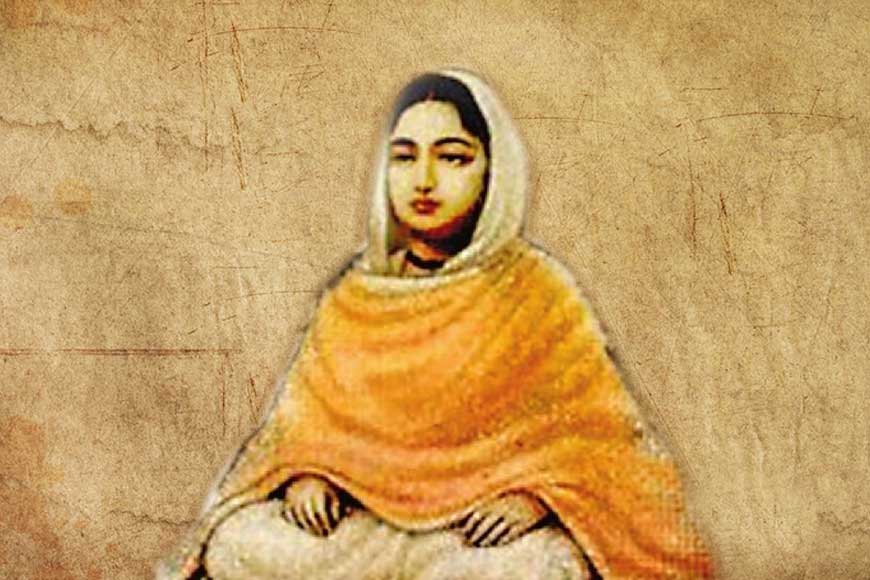The Real Rani – How Rani Rashmoni outwitted British East India Company

We often talk of Rani Rashmoni as the philanthropist linked to Dakshineshwar Temple. But how many of us speak of her business acumen and how she led a business empire annihilating the aspirations of the British traders? GB brings you this 4-part series on The Real Rani -- Rani Rashmoni’s entrepreneurship skills
As the British traders tried to grab the river banks, scores of worried fishermen traveled to Calcutta to plead their case with their elite landlords, but they didn’t receive any support. So as a last resort, they appealed to Rashmoni. What happened next is truly remarkable. Rashmoni gave Rs 10,000 and procured an ijara (lease agreement) from the East India Company, for a 10-km stretch of river Hooghly (Ganga’s distributary that flows through Calcutta) from Ghusuri to Metiabruz. She then proceeded to place two huge iron chains across the Hooghly to barricade her leased area and asked the distraught fisherfolk to cast their nets within this zone.
The impact of this smart move left Company officials bewildered and rattled — it brought all riverine traffic on the Hooghly to a grinding halt. When they asked Rashmoni for an explanation, she said that it was necessary to protect her income from the property as commercial steamships were affecting fishing activities in her ijara. She also quoted British law to point out that she was entitled to do so and was happy to fight it out in court if the company thought otherwise! With boats piling up on both sides of the shackled zone, East India Company was compelled to come to an agreement with Rashmoni. The tax on fishing was abolished, protecting the rights of fisherfolk and giving them unrestricted access to the Ganga. And that’s how a widow outwitted the famously crafty English company.
Durga Puja was celebrated with great pomp and splendor every year at Rani Rashmoni's house at Janbazar. During this festival, it was the norm of the local rich zamindars and nouveau roturier to host revelries for high-profile British officials. Professional dancers and musicians would entertain them with night-long performances and an endless supply of expensive food and wine would keep the guests happy. Rani Rashmoni, however, belonged to a different league altogether. Puja at her house was a very serious affair. She would arrange night-long Jatra-palas (indigenous folk theatre) for the entertainment of not only her family and staff but for the public at large. For the British, this defiance did not go down well.
Officials of the East India Company once stopped her Puja procession on the pretext that the loud beatings of drums and cymbals and people shouting and cheering created cacophony causing disturbances in the locality. Rashmoni was furious at this religious interference and ordered the procession to continue. British officials fined her Rs 40, a princely sum in the first half of 19th century, for defying the official order. When people came to know about this incident, protesters created a ruckus that forced the British to bow down to public demand and withdraw the penalty.
Once news reached Rani Rashmoni that some English soldiers from indigo plantations were ragging and disturbing local Hindu Bengali women of the villages. She immediately sent her guards and got the culprits arrested. In retaliation, the Janbazar Palace of Rani Rashmoni was attacked and seized by the East India Company. When English officials wanted to enter the sanctum sanctorum of her Raghunathjee’s temple in her worship room, Rashmoni took the sword in her hand and stood guarding the entrance of the room as she faced the British soldiers gallantly. This punishment was so severe for the English indigo planters that they never ever dared to clash with her. The most magnificent contribution of Rani Rashmoni was the construction of the Dakshineshwar Kali Temple. Ever since her husband’s death, Rani Rashmoni wished to go on a pilgrimage to Benaras and also construct a temple dedicated to Goddess Kali. When she was all set to start on her pilgrimage, a divine revelation came in the form of a dream. The dream moved the Rani intensely and she instructed her trusted people, especially her youngest son-in-law Mathur babu to look for a suitable plot to set up the Kali Temple.
After an immense hunt for an appropriate plot, a 20-acre plot in the village of Dakshineswar, on the banks of Ganga was selected for the project. The land resembled a hump of a tortoise. One part of the plot belonged to a European Christian while the other part was a Muslim burial ground. In 1847, Rani initiated the construction of the Kali temple on the very ground, thus integrating different faiths.
The Deed of Endowment states – “In order to fulfill his wish, on 6th September 1847 I purchased 54.4 bighas of land at the cost of Rs. 42 thousand and 500 from James Hasty. I made to build a puca Navaratna temple, twelve Shiva temples (twelve jyotirlingam), a Vishnu temple and a Natmandir on the land. On 31st May 1855, I placed Luxmi-Narayan Shila in the Navaratna temple as per the wish of my late husband and also for the welfare of his soul.” Dakshineshwar Temple proved the dynamism of the Rani. It was opened to the public in 1855.
Source: Rani Rashmoni – Ek Mohiyoshi Nari
(Concluded)










